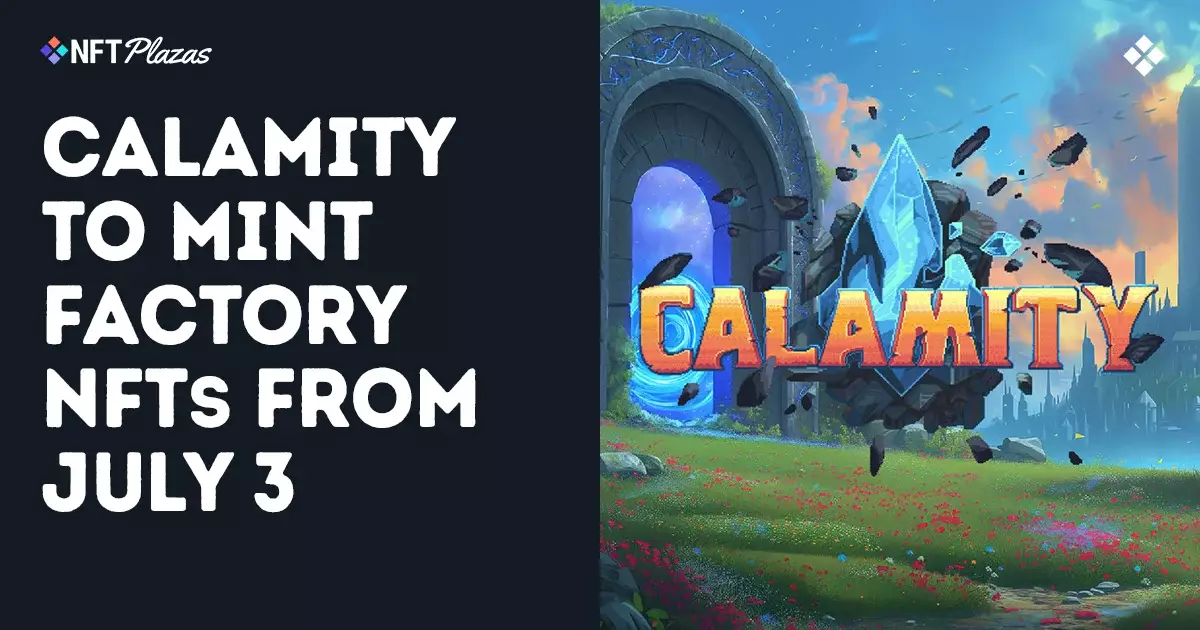The gaming world has long chased innovation, and the advent of blockchain has poured fuel on this restless fire. Calamity, an ambitious Web3 MMORPG launching its Factory NFTs on July 3, promises players a “personal in-game space” with real utility—an alluring pitch in today’s NFT gaming landscape. Yet, beneath this glossy veneer lies an uncomfortable question: how meaningful is this “utility” beyond a cleverly packaged marketing gimmick? Drawing parallels to a customizable Land NFT, the Factory promises crafting options, unique mechanics, and staking rewards—but these features risk being little more than cosmetic add-ons masked as revolutionary in-game benefits. It’s easy to get lost in the hype when a $40 digital token promises to grant you “access to game-changing systems” and the ability to earn Calamity’s future $WYRM currency. But the broader industry history suggests that “real utility” often translates to little more than marginal in-game advantages, serving primarily to fuel speculation rather than enhance player experience.
Tokenomics as a Double-Edged Sword
Calamity’s $WYRM token and staking mechanics underpin the entire economic narrative of the game’s NFT rollout. Players can stake Factory NFTs to earn $WYRM, which is framed as a valuable in-game currency. However, the reliance on performance-based play-to-earn mechanics inherently ties the game’s success to unpredictable market forces. This creates a system where in-game progress and financial rewards become inseparable—blurring the line between gaming and investment. In practice, this could encourage speculative buying, where players invest primarily to profit, not to enjoy the game. The risk? The game’s economy becomes a fragile construct, vulnerable to volatility and bear markets, ultimately harming player retention and game quality. Such tokenomics-driven ecosystems often end up rewarding early adopters disproportionately, leaving newcomers grappling with inflated prices and limited utility.
Exclusivity and the Gaming Divide
Calamity plans to release 9,999 Factory NFTs priced initially at $40 each, with opportunities to merge three Tier 1 NFTs into higher tiers for better staking benefits. This tiered mechanic creates a pay-to-win-like structure disguised as a blockchain innovation, potentially dividing the player base into “haves” and “have nots.” Those who invest heavily can dominate, while casual gamers may find themselves marginalized. The notion of “personal in-game space” and customized land sounds appealing, but it’s tethered to ownership of digital assets that require upfront investment—effectively gating content behind a paywall. This excludes a large swath of traditional gamers who want to enjoy the MMORPG experience without juggling investment calculus. What started as a promising blend of MMO and blockchain risks fragmenting the community and alienating players who value gameplay over speculation.
The Drawbacks of Retro-Inspired Design
Calamity fashions itself as a spiritual successor to action-RPGs like Diablo and Lineage II, leaning on nostalgic, retro-inspired gameplay. While that might attract fans of classic dungeon crawlers, it also signals a lack of innovation in core gameplay mechanics. The “retro” descriptor often implies dated UI, laborious grind systems, and repetitive mechanics that may not resonate with contemporary gamers accustomed to streamlined experiences. Relying too heavily on nostalgia can stall creative progress and reduce the appeal to a broader audience. Moreover, blending this old-school design with nascent blockchain features doesn’t guarantee a more engaging game—it risks compounding outdated design limitations with the complexities and frustrations of NFT ecosystems.
The Risk of Overhyping Without Substance
The release timeline and roadmaps—such as the Early Bird sale on July 3 and the upcoming Season 1—reflect confident marketing but lack clear evidence of sustainable in-game innovation. Promises of “unique mechanics,” “game-changing systems,” and “access to Automatas” are tantalizing yet vague, fitting the typical Web3 playbook of teasing features to lure investors. Without transparent gameplay reveals and hands-on player feedback, the risk is that Calamity becomes another case of overpromised and underdelivered blockchain gaming projects. In its eagerness to attract capital and speculation, Calamity may sacrifice delivering a rich and cohesive gameplay experience, eroding player trust in the long term.
Blockchain’s Unfulfilled Promise in MMORPGs
The fusion of MMORPG genres with blockchain technology has long promised player empowerment through true ownership and decentralized economies. Yet, the reality rarely matches ambition. Calamity, built on Ronin and debuting through the Epic Games Store, attempts this blending but inherits inherent blockchain trade-offs: technical complexity, environmental concerns, and market instability. The proposal of staking NFTs to receive tokens is alluring only if the underlying blockchain infrastructure delivers seamless, low-cost transactions and robust security. Moreover, blockchain-based asset ownership does not inherently improve gameplay or community—these must come from solid game design, not speculative asset creation. Unless Calamity masters the delicate balance between innovative game design and blockchain integration, it risks alienating traditional MMORPG players wary of NFT gimmicks and crypto volatility.
A Center-Right Perspective: Moderation Over Radical Disruption
From a center-right viewpoint, the ideal gaming industry progress embraces innovation but resists unregulated speculation and radical disruption that fragment communities. Calamity’s aggressive NFT-based monetization model highlights the dangers of bleeding economic incentives into what should primarily be an entertainment medium. While property rights and digital asset ownership are important, their implementation must be measured and add genuine value, not create gated experiences optimized for financial extraction. Innovation should empower players without excluding those unwilling or unable to participate in speculative markets. Calamity’s model currently leans too heavily towards economically motivated stratification, undermining the meritocratic spirit of traditional MMORPGs where skill and commitment determine success—something worth preserving as gaming evolves.















